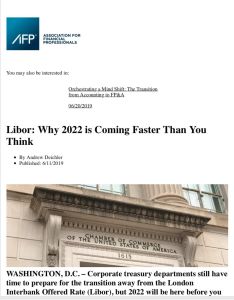Join getAbstract to access the summary!

Join getAbstract to access the summary!
Andrew Deichler
Libor: Why 2022 is Coming Faster Than You Think
AFP, 2019
What's inside?
Regulators are winding down the London Interbank Offered Rate (Libor), but markets may not be ready.
Recommendation
In 2022, regulators will pull the plug on the long-standing, ubiquitous London Interbank Offered Rate (Libor). The global lending rate underpins a contract and transaction infrastructure of some $200 trillion, and international bankers, corporate finance departments, brokers and traders are worried that the impending expiration may have serious impacts on market stability. Financial writer Andrew Deichler examines the current environment for Libor and the new rate that may replace it. Market professionals will find this concise report extremely valuable.
Summary
About the Author
Andrew Deichler is a multimedia content manager at the Association for Financial Professionals.

















Comment on this summary